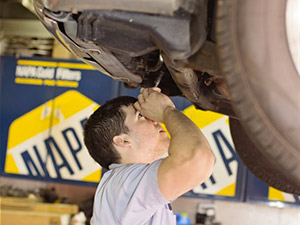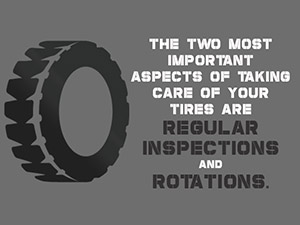Maintaining Your Tires
5 More Car Tire Myths That Don’t Hold Air
Your car’s tires are arguably four of its most important components. Genins Tires and Auto CareBut many drivers hold on to outdated or simply baseless ideas about tires, and those misconceptions can cost you money or even cause safety problems. Here are five common tire myths that need to be deflated:
Myth:Tires With the Same Markings Are Comparable
Just because two tires have the same numbers on their sidewalls doesn’t mean they’re the same. Not only may they have some small differences regarding size, they’ll likely have very different levels of performance. That’s why it’s really important to do your research or ask an expert when choosing new tires.
Myth: Used Tires Are Always Cheaper
Used car tires are the way to go, some say, if you’re looking to save some money. While this isn’t untrue per se — used tires can offer you a good bargain — you’ll find new car tires for sale at prices that rival used tires, especially if you start looking early enough that you can wait for a good sale at your local car repair shop (saving you money on shipping). This will also eliminate stress associated with buying tires, as it takes some expertise to spot which used tires really have more life left in them; it’s unfortunately common to find used car tires for sale that should have been recycled instead.
Myth: Tires Don’t Need Maintenance
The two most important aspects of taking care of your tires are regular inspections and rotations. Tires aren’t in good shape as long as they’re not flat; dry rot, cracking and uneven wear are all common problems. And regarding wear, you should put rotations on your list of regular maintenance moves, just like oil changes every 3,000 to 7,000 miles and brake pad replacements every 30,000 to 70,000 miles.
Myth: Tire Monitoring Systems Are Reliable
In new cars with tire-pressure monitoring systems, people often rely on them to ensure that tires are correctly inflated. But these systems often won’t issue a warning until tire pressure is a full 25% below what’s recommended by the manufacturer. That means by the time the system alerts you, you’ll already be driving on tires so underinflated as to be unsafe; the system is simply intended to be a final failsafe, not a regular monitoring system.
Myth: New Tires Should Go Up Front
Some people cling to the idea that if they can only afford two tires, those new tires should go on the front wheels. But actually, the opposite is true no matter what kind of vehicle you drive. This is because the rear wheels provide stability, and having worn rear tires will cause spin-outs and fishtails. There are quite a few videos online demonstrating this phenomenon and explaining the physics behind it if you remain unconvinced.

